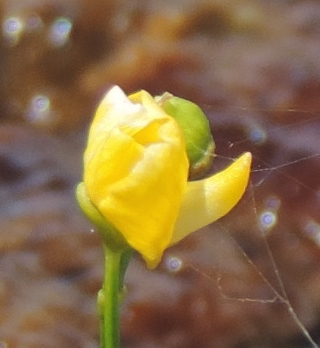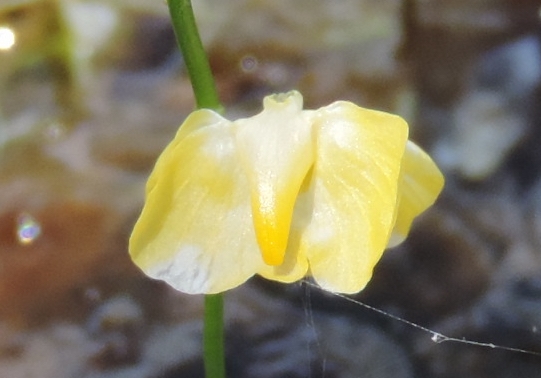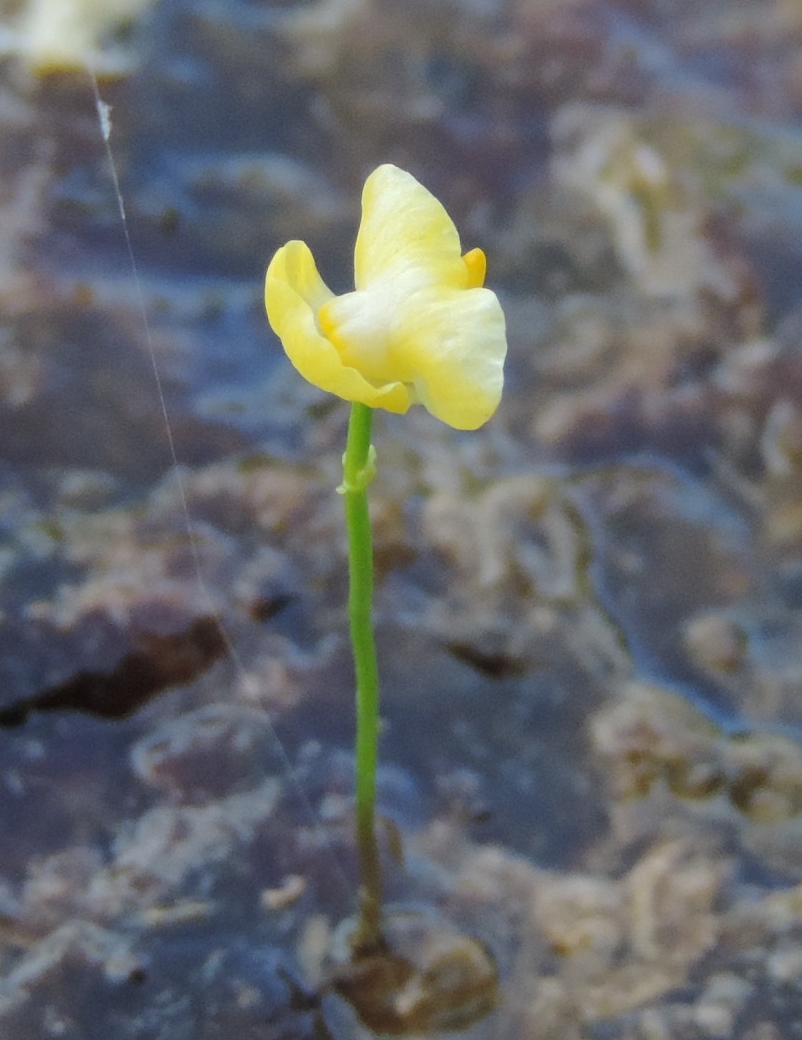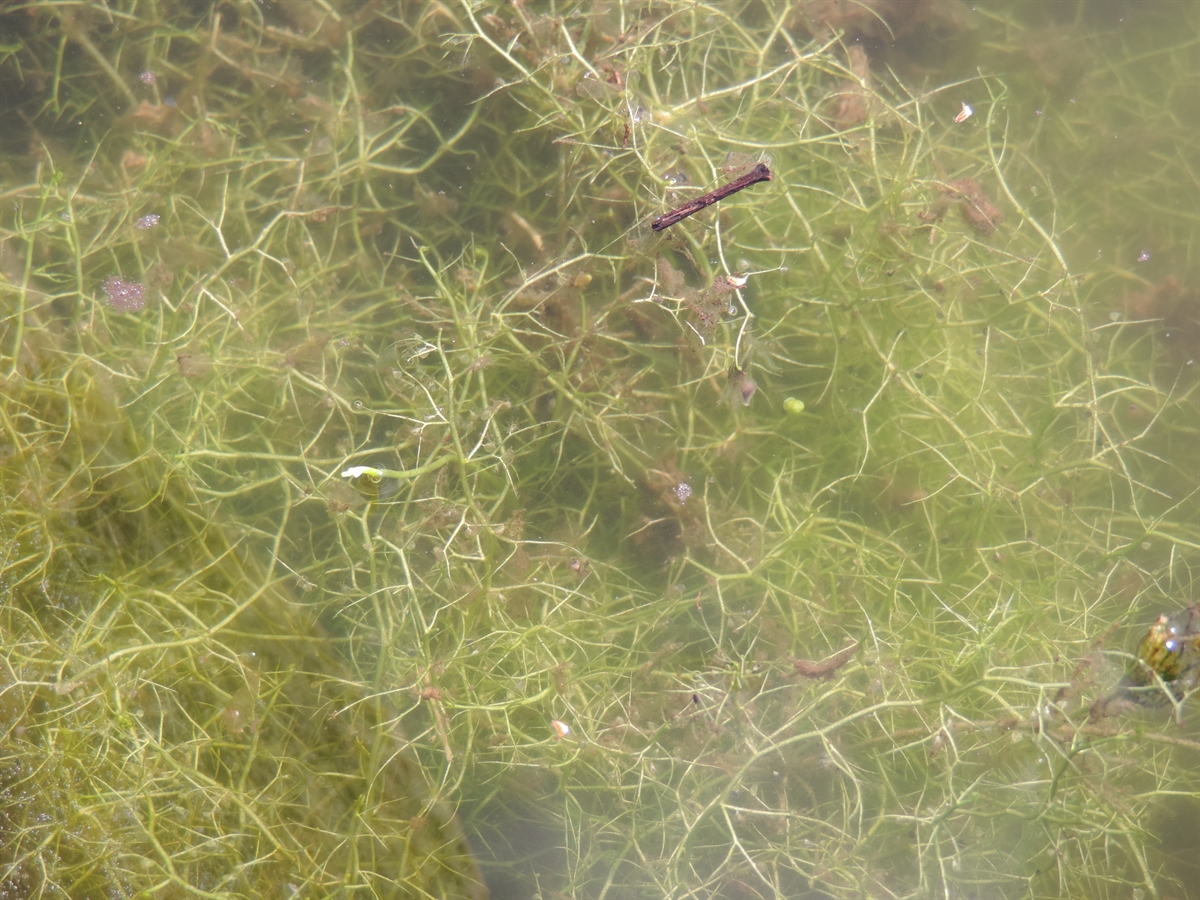Habit: Utricularia gibba grows as a filamentous branching floating aquatic. The slender branches are divided into filiform leaves. The stems and leaves are to 20 cm in length, grayish green, and can have bladder traps.
The complete, perfect, zygomorphic flowers are arranged in few flowered racemes. The calyx has 2 sepals with the lower one larger. The corolla has 4 yellow petals with the lower petal enlarged and 3-lobed. There are 2 stamens fused together. The carpel has a superior ovary with a single locule. The fruit is a capsule at maturity.
Utricularia gibba is similar to U. cornuta but differs in having a shorter inflorescence and smaller flowers with a shorter spur.
Habitat: Utricularia gibba grows in Fresh Water Wetlands.
Distribution: Utricularia gibba occurs throughout the Lucayan Archipelago, North America and the entire Caribbean region.
Medicinal/Cultural/Economic usage: Utricularia gibba is not known to be used medicinally in the Lucayan Archipelago.
Utricularia gibba is a carnivorous plant that traps small aquatic insects in the bladders that form on the stems. When an insect swims close it triggers a mechanism that sucks the insect inside and then digests it.



